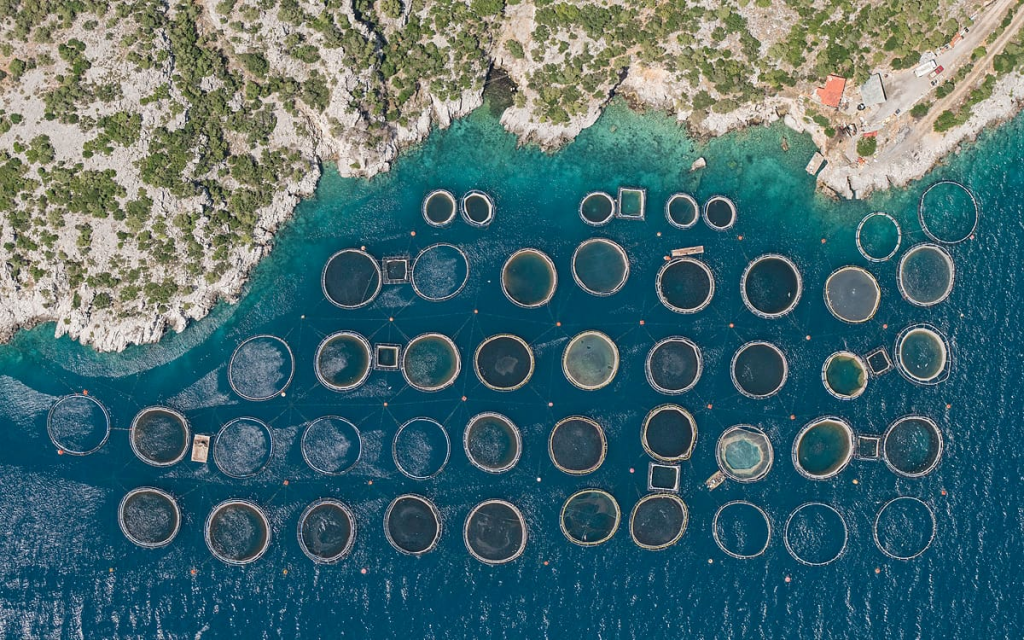It is easy to parcipate. Choose a challenge or propose one. We will provide the datasets and assign you a mentor.
These are the challenges:
1. Develop AI-powered Tools for Fish Counting, Disease Recognition, and Behavior Analysis in Aquaculture Systems

Description:
This challenge focuses on creating innovative solutions using computer vision to address critical aspects of aquaculture management. These tools aim to enhance monitoring in fish farming environments by automating tasks such as fish counting to detect losses from escapes, recognizing visible signs of diseases (e.g., discoloration, lesions), and identifying aberrant behaviors (e.g., unusual swimming patterns). The goal is to provide real-time insights that help aquaculture professionals optimize their operations and improve fish welfare.
Technical Challenges:
- Training AI models with diverse datasets to ensure accuracy in different aquaculture environments, including cages, tanks, and open water.
- Addressing variability in conditions such as water clarity, lighting, and fish species to maintain consistent performance.
- Developing scalable systems that integrate seamlessly with existing aquaculture management tools.
Possible Solutions:
- Fish Counting Systems: Deploy underwater cameras equipped with AI to automatically count fish, monitor stock levels, and identify potential losses due to escapes.
- Disease Recognition Tools: Use advanced image processing to detect signs of illness, such as skin abnormalities or changes in coloration, enabling early intervention.
- Behavior Analysis Software: Implement algorithms to analyze swimming patterns and detect unusual behaviors that may indicate stress, suboptimal conditions, or disease.
Impact:
- Enhanced Stock Management: Accurate fish counts can help farmers quickly address losses and improve containment strategies, reducing economic losses.
- Timely Interventions: Early detection of diseases or stress behaviors minimizes the need for excessive medication and reduces mortality rates.
- Improved Welfare and Sustainability: Real-time monitoring allows for better management of fish health and environmental conditions, promoting sustainable aquaculture practices.
By leveraging computer vision technology, this challenge aims to transform aquaculture monitoring, enabling more efficient, sustainable, and welfare-focused fish farming practices.
2. Water Quality Monitoring Through Satellite Observation

Utilize satellite data to design systems that monitor key water quality parameters in real time, ensuring optimal conditions for aquaculture.
Description:
This challenge addresses the need for advanced technologies to monitor factors such as water temperature, dissolved oxygen levels, turbidity, and pollutants. Data from satellites like the Sentinel series from the Copernicus program can be processed and analyzed to provide valuable insights for aquaculture farmers.
Technical Challenges:
- Translating raw satellite data into relevant water quality metrics for aquaculture.
- Integrating satellite data with local sensors to enhance accuracy.
- Creating user-friendly platforms for farmers with no advanced technical knowledge.
Possible Solutions:
- Interactive dashboards combining satellite and real-time sensor data.
- Predictive models to alert farmers about critical changes in water quality.
- Mobile applications for aquaculture farmers to access water quality data easily.
Impact:
- Improved efficiency in water resource management.
- Prevention of adverse conditions that could harm fish production.
- Promotion of sustainability through responsible resource use.
3. Designing Sustainable Systems

Innovate methods and tools to promote animal welfare and environmental sustainability in aquaculture systems.
Description:
This challenge focuses on developing solutions that reduce aquaculture’s environmental impact while improving living conditions for fish. These could include designing new feeding systems, water recycling processes, or physical structures that better mimic natural environments.
Technical Challenges:
- Minimizing waste generation and its impact on surrounding ecosystems.
- Designing systems that optimize energy and resource use.
- Ensuring scalability and economic viability of sustainable designs.
Possible Solutions:
- Recirculating aquaculture systems (RAS) that reduce water consumption and efficiently filter waste.
- Intelligent feeding systems that adjust feed quantities based on fish needs, minimizing waste.
- Modular and eco-friendly structures for fish farms.
Impact:
- Reduction of aquaculture’s environmental footprint.
- Improved fish quality of life through more natural environments.
- Increased profitability of sustainable production systems.
4. Free Contribution Ideas
Provide a space for creativity and encourage solutions beyond the defined challenges, allowing participants to tackle other critical problems or innovate in new areas within aquaculture.
Description:
This section is for teams or individuals who wish to explore issues not included in the main challenges. The goal is to enable participants to present original and innovative proposals that also contribute to advancing sustainability, animal welfare, or technological efficiency in aquaculture.
Examples of Possible Areas:
- Big Data in Aquaculture: Design systems to analyze large volumes of data and improve decision-making processes.
- Circular Economy: Propose methods to reuse aquaculture byproducts (e.g., organic waste) in other productive processes.
- Blockchain for Traceability: Develop tools to track the lifecycle of aquaculture products from origin to consumer.
- New Fish Feed Alternatives: Innovate sustainable fish feed options, such as insect- or algae-based proteins.
- Ecosystem Interaction: Design models that minimize the impact of aquaculture farms on surrounding marine ecosystems.
Impact:
- Foster the exploration of disruptive ideas.
- Open new avenues of innovation not previously considered.
- Identify emerging issues and solutions with significant social, economic, or environmental impact.
